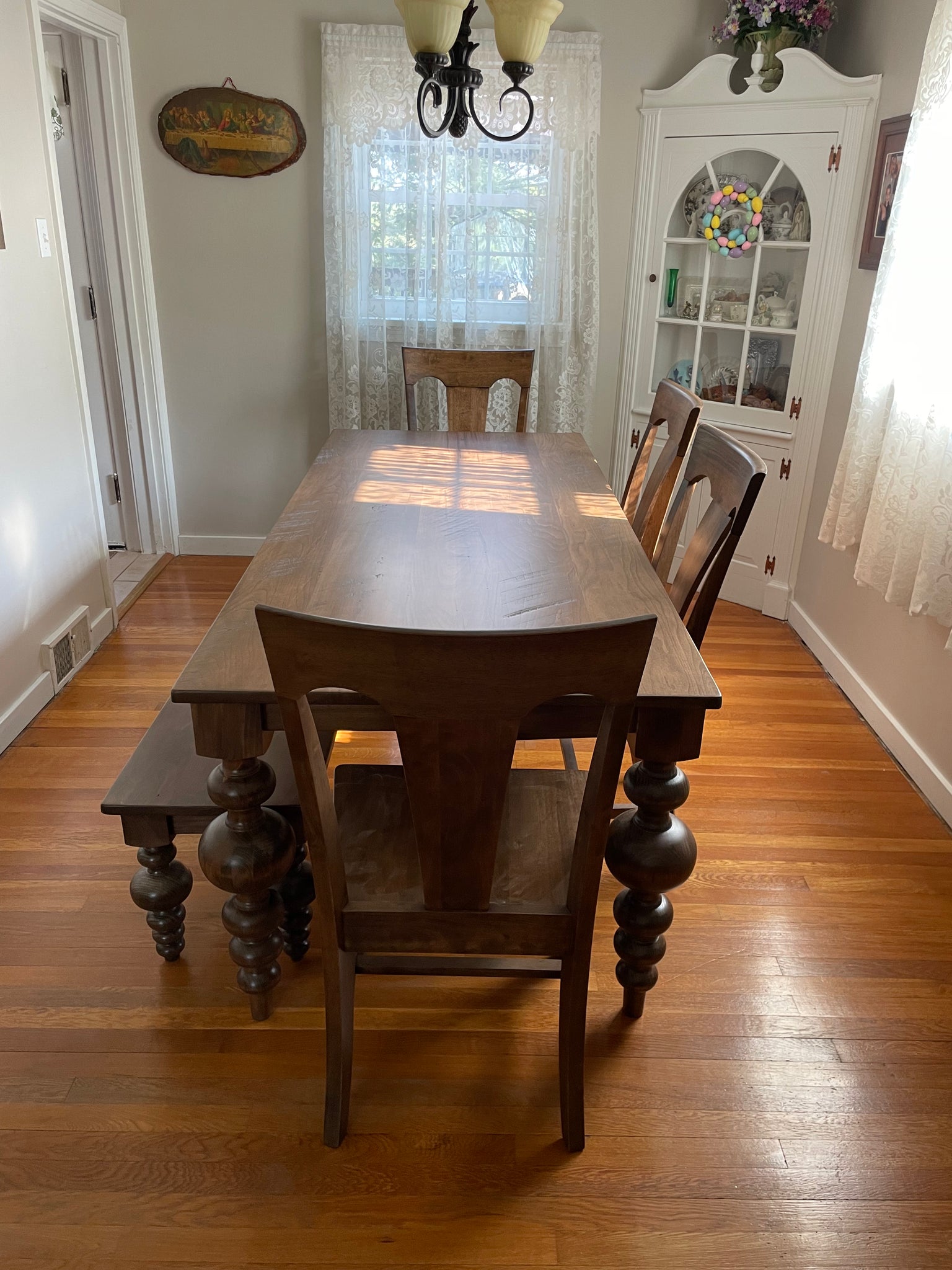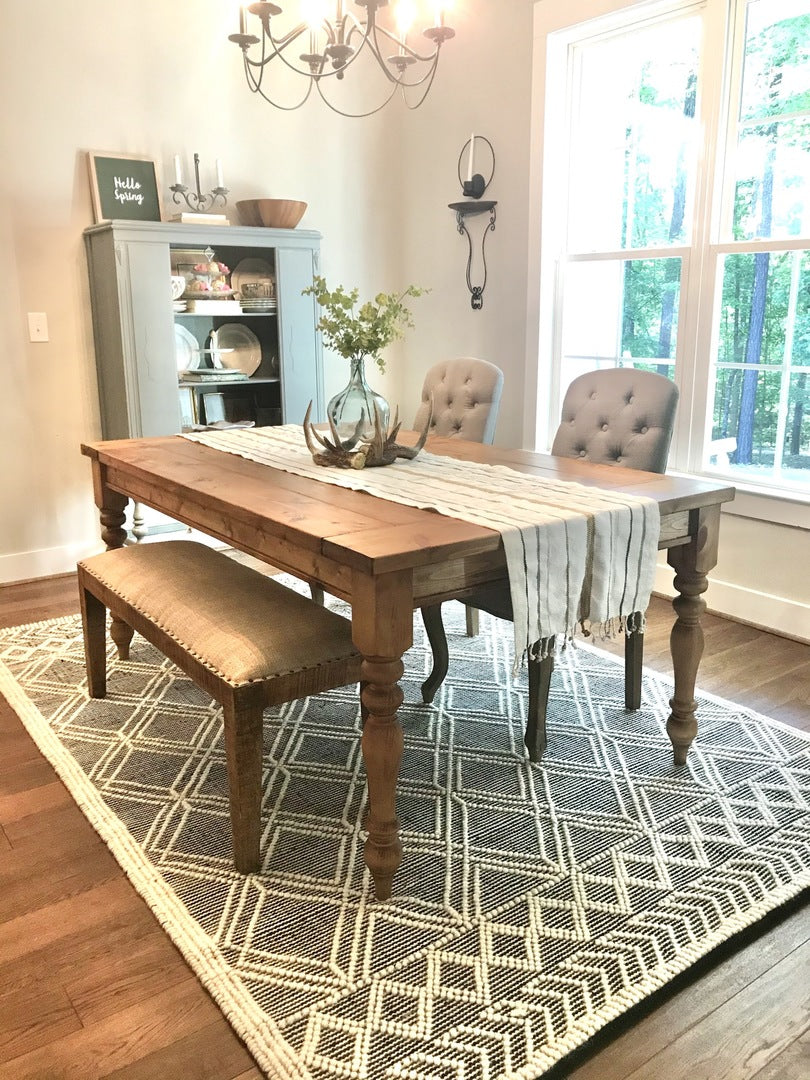The Ultimate Overview to Picking Sturdy Dining Room Table Legs
The Ultimate Overview to Picking Sturdy Dining Room Table Legs
Blog Article
Choosing the Perfect Table: What Styles Job Best for Your Home?
Choosing the optimal dining table for your home can be a nuanced procedure that balances visual appeals and capability. Whether your area leans towards standard beauty, modern-day minimalism, rustic appeal, or commercial trendy, the variety of designs available can provide to diverse preferences. Each design uses unique advantages and challenges that can either improve or disrupt your dining location's harmony. Recognizing how various products, shapes, and dimensions interact with your existing decoration is crucial. To browse these selections efficiently and locate a table that truly matches your home, consider the complying with facets carefully.
Examining Your Room
Evaluating the dimensions and design of your eating location is an important primary step in picking the perfect dining table. Begin by determining the length and width of the space, making up entrances, home windows, and various other building attributes that can influence table placement. This ensures that your table not only fits but also enables comfortable movement around it.
Consider the number of people you usually amuse. A table needs to accommodate your home's daily needs while providing sufficient flexibility for occasional guests. As a rule of thumb, allocate at the very least 24 inches of table size per individual to make certain a comfy dining experience.
It's likewise vital to preserve suitable clearance around the table. Ideally, there need to go to least 36 inches between the table side and wall surfaces or various other furniture, enabling very easy accessibility and motion. For spaces where chairs with arms or additional storage space systems like buffets are involved, increasing this clearance to 48 inches is suggested.
Illumination and environment play significant duties also. Make certain that your table aligns with existing lights components or plan for ample illumination solutions. This thorough spatial evaluation guarantees that your table not only fits literally however additionally balances with your room's total functionality and visual.
Popular Table Styles

Typical eating tables usually include luxuriant information, curved legs, and rich timber coatings, stimulating a sense of ageless beauty. They are perfect for homes with classic decor or those aiming to include a touch of class to their dining area.
Modern eating tables focus on simplicity and clean lines, frequently incorporating products like glass and steel. These tables are optimal for contemporary rooms, giving a smooth and uncluttered appearance that enhances minimalist design ideologies.
Rustic table, on the other hand, stress all-natural materials and a handmade appearance - dining room table legs. They typically feature redeemed wood and a distressed surface, creating a cozy and inviting atmosphere. These tables function more well in farmhouse-style homes or those looking for a cozy, natural feel
Industrial eating tables combine raw products such as steel and timber, commonly showcasing an utilitarian visual. This style is fit for loft spaces or urban areas, adding a touch of sturdy charm and durability to the eating experience.
Each design uses distinct advantages, making it necessary to pick one that aligns with your home's total design and your individual choices.
Material Selections
When selecting a table, the selection of material plays a critical function in establishing both the table's aesthetic appeals and functionality. Wood, steel, glass, and composite products each offer special benefits and difficulties, making it important to straighten the product with your home's design and way of life demands.
Wood is an ageless and functional option, available in ranges such as oak, walnut, and mahogany. Recognized for its resilience and warmth, timber enhances both traditional and contemporary interiors. Nevertheless, it calls for regular maintenance to avoid scrapes and bending.
Metal tables, commonly crafted from stainless-steel, light weight aluminum, or wrought iron, are praised for their modern appeal and toughness. They are especially fit for commercial or minimal setups however can be susceptible to damages and might really feel chilly to the touch.
Glass table you can try here bring an air of sophistication and visibility, suitable for smaller rooms as they develop an impression of more space. While easy to clean, glass can be vulnerable to smudges and requires careful handling to avoid chips and splits.
Composite products, such as MDF and plywood, deal economical and adjustable options, though they may lack the longevity of all-natural products. Choosing the ideal material ensures your table is both a useful possession and a visual delight.
Forming and Dimension Considerations
After determining the ideal material for your eating table, the next factor to consider is selecting the appropriate shape and dimension to suit your area. Conversely, rounded tables cultivate a sense of affection and are outstanding for smaller sized dining areas, urging conversation by removing corners and making everybody really feel similarly consisted of.
As a policy of thumb, allot at the very least 24 inches of table size per individual to make certain comfy eating. In addition, take into consideration the table's clearance room: there need to be at the very least 36 inches in between the table side and the wall surfaces or various other furniture. Prolonging tables provide versatility if you often host larger gatherings, providing added seats when required without inhabiting additional space daily.
Matching Your Design
Picking an eating table that integrates with your existing decoration is critical in creating a natural and inviting space. Begin by examining your present interior layout style, whether it be contemporary, typical, rustic, or diverse. The eating table need to enhance the overall visual, not complete with it. For circumstances, a sleek, minimal table with clean lines is perfect for a modern home, while a vintage, luxuriant table fits a more typical setting.
Color and product are equally considerable. If your style features warm tones and all-natural products, think about a wood table to boost the organic feel. Alternatively, a glass or metal table may be a lot more ideal in a space dominated by trendy colors and industrial aspects. Take note of the finish, more as it ought to mirror other furnishings and components to keep harmony.
Appearance plays a vital duty too. A rough-hewn, reclaimed wood table can add character to a rustic room, while a polished marble surface can raise a lavish eating location. Ultimately, think about the range and proportion of the table in regard to the room size and existing furniture. A well-matched table not just improves aesthetic charm but additionally enriches the general dining experience.

Conclusion
Selecting the optimal eating table requires mindful factor to consider of room, style, products, form, and dimension. Standard tables enhance classic interiors with abundant wood finishes, while contemporary tables suit modern settings via glass and metal.
Report this page